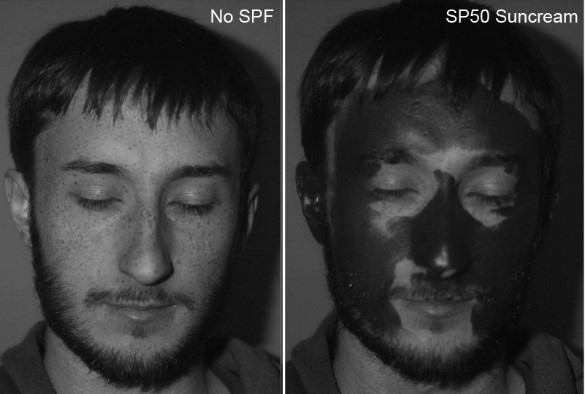
Before and after sunscreen application
Snow fanatics are no doubt aware of the risk of getting sunburnt on the slopes, but a new study shows that it is more than a red face that skiers and snowboarders should be concerned about.
The study, published by scientists from the Department of Eye & Vision Science at the University, shows that people may not be taking as good care of their face and eyes as they should, with potentially devastating results.
They asked participants to apply sunscreen to their faces. Before and after photos were taken with a UV-sensitive camera, with areas covered with sunscreen appearing black.
Analysis showed that on average people missed 9.5% of their faces, with the most commonly missed areas being the eyelids and the area between the inner corner of the eye and the bridge of the nose. Even when given extra information about skin cancers of the eyelid region, 7.7% of participants’ faces were left unprotected.
The dangers of UV exposure
As more than 90% of basal cell carcinomas occur on the head or neck, and 5-10% of all skin cancers occur on the eyelids, this is worrying news, and should be of particular concern to people taking to the slopes this winter.
Many people will already be aware of the combined threat to their skin of higher altitude (less atmospheric protection from UV radiation) and snow glare (reflecting sun back onto the skin), but this study shows that many people may not be taking as good care of their eyes and skin as they should.
Dr Kevin Hamill explains: “The eyes, and the skin around them, are especially vulnerable to UV radiation and cancers, so skiers and snowboarders who are at risk of high exposure really need to take care.
“A thoroughly-applied sunblock of at least SPF 30 is a good start but isn’t enough. You need to make sure that you take your cream to the slopes and reapply at regular intervals. You also need to wear goggles or sunglasses. Wrap around frames that protect the whole eye area and have 100% UV protection are ideal.”
The full study, entitled ‘UV imaging reveals facial areas that are prone to skin cancer are disproportionately missed during sunscreen application’, can be found here.